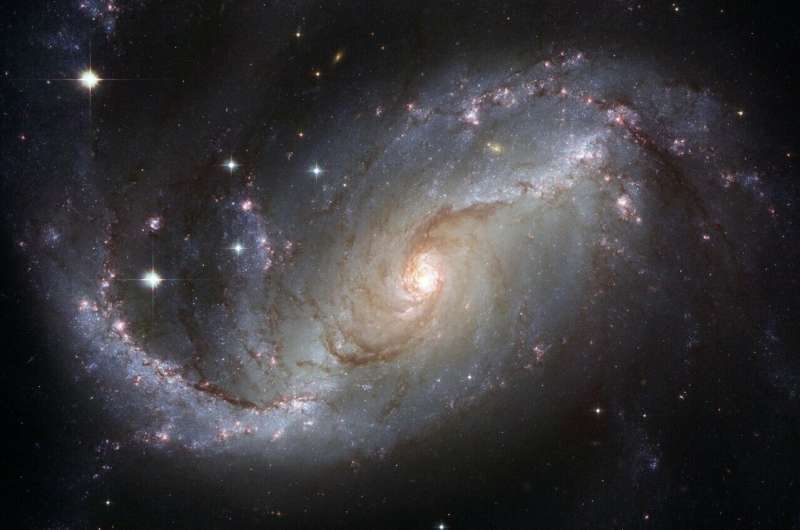Credit: Pixabay/CC0 Public Domain
An international team of researchers has made near-infrared polarized light observations of three known interacting twin-disk systems, furthering our understanding of how neighboring stars influence planet-forming disks.
In their study, published in Monthly Notices of the Royal Astronomical Society, the researchers used photo imagery from the European Southern Observatory's Very Large Telescope (VLT) to gain a new perspective on the spirals that can form when the dust in disks from dual star systems interact.
Prior research has suggested that star formation begins when gravity forces clouds of dust and gas to collapse into a central entity. As the stars form, they are encircled by a halo of matter, which can lead to the creation of planets. Such halos are known as disks.
Prior research has also suggested that if two stars emerge from the same cloud of gas and dust, and if they are close enough together, their disks can interact with one another. And occasionally, the result is spiral formations. In this new effort, the researchers created images of three such spiral formations in three parts of the Milky Way.
The researchers analyzed images from the VLT that captured polarized light from the three star systems—the stars themselves do not emit the light; it comes from the light that is bounced off the dust in the disks. By analyzing the polarized light from each of the star systems, the researchers were able to create images of the three systems showing their spirals.
The researchers note that in addition to creating eye-catching imagery, their work is part of an overall effort to learn more about how planets are formed in systems where spirals arise due to interactions with partner stars. They also note that such interactions are far from uniform—some stars orbit each other, while others are nothing more than flybys. Each is expected to impact planetary disks in different ways, and thus, the planets that eventually form.
The team notes that their work and prior research is beginning to change how space scientists view the impact of flybys, suggesting that they may play a larger role in planet formation than has been thought.
More information: Philipp Weber et al, The SPHERE view of three interacting twin disc systems in polarised light, Monthly Notices of the Royal Astronomical Society (2022). DOI: 10.1093/mnras/stac3478
Journal information: Monthly Notices of the Royal Astronomical Society
© 2022 Science X Network
























